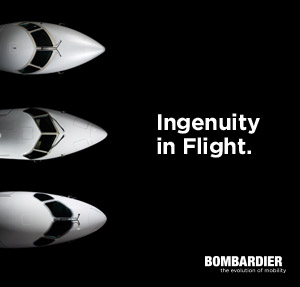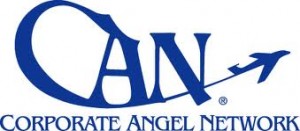Chile to invest $260 million in construction or remodeling five airports
August 3, 2009
The government has announced that it will invest $260 million in the construction and/or remodeling of five airports in the country. A call for proposals from the private sector will be issued in the second half of 2009. The two new airports include the regions of Araucania and Coquimbo.
Mexicana has announced that a merger with Aeromexico is possible
August 3, 2009
Gaston Azcarraga, CEO of the Mexican airline, stated recently a merger is possible but it must be based on the two carriers being profitable. He called on the government to take action on lowering airport and other costs which make it difficult for the airlines to be profitable.
German Efromovich is taking control of VarigLog
August 3, 2009
The owner of the Synergy Group has signed an option to acquire control of VarigLog, the cargo arm of Varig, which was acquired by the US fund, Matlin Patterson in 2007. Efromovich acquired Tampa Cargo in Colombia and is building an airline network which includes Avianca, Ocean Air in Brazil, Helicol and SAM in Colombia, VIP in Ecuador and he has a stock option to acquire 80% of Aerogal, also in Ecuador. He announced that Avianca will assume the management of the Synergy Group.
Panama reports passenger growth at Tocumen Airport up 6.4%
August 3, 2009
According to the airport, its passenger traffic grew 6.4% to 1.8 million in the first five months of 2009 in spite of the May drop of 8.6% due to the Swine Flu epidemic. The airport authority is forecasting it will handle 4.8 million passengers in 2009, compared to 4.5 million in 2008.
JetBlue withdraws motion to US DOT to retain Tampa-Cancun rights
August 3, 2009
JetBlue plans to end Tampa-Cancun service September 9 but originally wanted to maintain the authority so service could be resumed when demand returned. Subsequently, the motion to hold on to the route was withdrawn but the carrier said that it will review adding the flight back when demand returns.
Sun Country applies for Milwaukee-Cancun route
August 3, 2009
Minneapolis-based Sun Country has applied for seasonal authority for Milwaukee-Cancun service from January 15 through April. Service will be three-times weekly on B 737s. The carrier already serves Cancun from Minneapolis/St. Paul and Dallas/Fort Worth.
Caribbean Airlines CEO, Philip Saunders resigns
August 3, 2009
The airline’s CEO has stepped down for personal reasons. But he will continue with the airline until a successor has been appointed. Philip Saunders replaced Peter Davies as CEO in October 2007. His career includes senior executive positions with the Star Alliance, British Airways and SN Brussels.
LAN Airlines net income of $4.2 million in 2nd quarter
August 3, 2009
LAN (Latin America Network) “model airline” reported $4.2 million in net income in the second quarter of 2009, down 93% compared to $60.5 million in the same period last year. This is the direct result of the fuel hedging cost of $52.6 million compared to the fuel hedging gain of $29.2 million last year. If you exclude the negative impact of the fuel hedging, operating income was $87.6 million in the quarter compared to $56.1 million in 2008, for a 56.2% increase. The operating margin, excluding fuel hedging was a record 11.2% in the second quarter. The airline has continued to expand its presence in the region launching twice-weekly service from its hub in Lima to Cartagena during the quarter and starting daily service from Santiago to Lima via Iquique on July 10. On August 15 it will begin operating Lima-Quito-Cali three times weekly. It has also expanded its domestic operation with 13 weekly flights in Argentina from Buenos Aires to Tucuman. In addition LAN Ecuador continues to develop its domestic service, currently operating 46 weekly flights between Guayaquil and Quito as well as daily service between Guayaquil and Cuenca. During the second quarter the airline continued its passenger growth over the same period in 2008, increasing traffic by 13.5% and load factor 1.7 points to 73.6%. Cargo revenues have fallen 43.4% – in line with the trend in cargo markets worldwide. During the quarter it received two B777 freighters which are replacing B767 freighters on long haul markets. It will take delivery of two B767-300s by the end of 2009. Its total fleet will grow from 85 passenger and 11 cargo aircraft for a total fleet of 96 by the year end to 103 in 2010, 115 in 2011 and 119 in 2012.
EADS North America’s LUH Platform Meets Key U.S. Army Armed Aerial Scout Performance Requirement
August 3, 2009
Flight Testing Validates Aircraft’s High/Hot Hover, Endurance and Controllability With 2,300-Pound Payload
ARLINGTON, VA and ALAMOSA, CO–(Marketwire – July 29, 2009) – EADS North America today announced it has completed a series of successful “high/hot” flight demonstrations of its UH-72A Lakota Light Utility Helicopter (LUH) platform. These flights proved that the UH-72A platform, currently being delivered by EADS North America to the U.S. Army, is able to meet the service’s demanding high altitude/high temperature mission profiles — for both current and future armed aerial scout operations — even in the world’s most challenging combat environments.
Operating from Alamosa, Colo. with a takeoff elevation of more than 7,500 feet and carrying a simulated 2,300-pound Mission Equipment Package (MEP), the Lakota platform (to be known as the Armed Scout 645 once missionized) successfully hovered-out-of-ground-effect (HOGE) at a density altitude of 6,000 feet and 95 degrees Fahrenheit. This requirement was included in the Army’s Sources Sought document issued in October 2008 and reflects the evolving armed aerial scout mission environments faced by U.S. forces operating in theaters such as Afghanistan. The demonstration flight not only validated the aircraft’s high/hot hover capability but also confirmed tail rotor authority and controllability with the simulated MEP payload in hover-out-of-ground-effect conditions.
A subsequent flight with the simulated MEP payload validated the aircraft’s long-range endurance capability — completing a 2 hour, 30 minute flight with a 35-minute fuel reserve.
“This series of successful flights with a Lakota platform clearly demonstrates our team’s ability to meet the Army’s demanding high and hot operational requirements with a full combat mission package. We did so with a platform that provides broad commonality to the successful UH-72A Light Utility Helicopter flying in the Army inventory today,” said David R. Oliver, EADS North America’s chief operating officer. “We are confident in the capabilities of both our product and team — and remain committed to meeting the Army’s urgent requirement to address this critical combat aviation mission.”
On May 5, 2009, EADS North America unveiled the Armed Scout 645 offering for the Army’s armed aerial scout requirement and announced the selection of Lockheed Martin to provide the Mission Equipment Package. The Armed Scout 645 will be built at American Eurocopter’s Columbus, Miss. facility where the Army’s UH-72A Lakota is currently produced.
The Army has ordered 128 Lakotas and plans to acquire a total of 345 UH-72As through 2016. In addition, five Light Utility Helicopters have been ordered by the U.S. Navy for pilot training at the Naval Test Pilot School at Patuxent River, Md.
To date EADS North America has delivered 72 UH-72A Lakotas, all on or ahead of schedule. The UH-72A and Armed Scout 645 aircraft platforms are based on Eurocopter’s proven EC145 multi-role helicopter.
The UH-72A Lakota fleet maintains an operational availability rate higher than 90 percent; underscoring the readiness of these rotary-wing aircraft to perform their varied assignments.
Goodyear and NASA Invent ‘Spring Tire’ for Moon, Possibly Earth
August 3, 2009
AKRON, Ohio, Aug. 3 /PRNewswire-FirstCall/ — The National Aeronautics and Space Administration (NASA) and The Goodyear Tire & Rubber Company (NYSE: GT) have developed an airless tire to transport large, long-range vehicles across the surface of the moon.
The new “Spring Tire” with 800 load bearing springs is designed to carry much heavier vehicles over much greater distances than the wire mesh tire previously used on the Apollo Lunar Roving Vehicle (LRV). The new tire will allow for broader exploration and the eventual development and maintenance of a lunar outpost.
According to Vivake Asnani, NASA’s principal investigator at the Glenn Research Center in Cleveland, this was a significant change in requirements that required innovation. “With the combined requirements of increased load and life, we needed to make a fundamental change to the original moon tire,” he said. “What the Goodyear-NASA team developed is an innovative, yet simple network of interwoven springs that does the job. The tire design seems almost obvious in retrospect, as most good inventions do.”
The Spring Tire was installed on NASA’s Lunar Electric Rover test vehicle and put through its paces at the Johnson Space Center’s “Rock Yard” in Houston where it performed successfully.
“This tire is extremely durable and extremely energy efficient,” noted Jim Benzing, Goodyear’s lead innovator on the project. “The spring design contours to the surface on which it’s driven to provide traction. But all of the energy used to deform the tire is returned when the springs rebound. It doesn’t generate heat like a normal tire.”
According to Goodyear engineers, development of the original Apollo lunar mission tires, and the new Spring Tire were driven by the fact that traditional rubber, pneumatic (air-filled) tires used on Earth have little utility on the moon. This is because rubber properties vary significantly between the extreme cold and hot temperatures experienced in the shaded and directly sunlit areas of the moon. Furthermore, unfiltered solar radiation degrades rubber, and pneumatic tires pose an unacceptable risk of deflation.
According to Asnani, the Spring Tire does not have a “single point failure mode. What that means,” he said, “is that a hard impact that might cause a pneumatic tire to puncture and deflate would only damage one of the 800 load bearing springs. Along with having this ultra-redundant characteristic, the tire has a combination of overall stiffness yet flexibility that allows off-road vehicles to travel fast over rough terrain with relatively little motion being transferred to the vehicle.”
NASA has been so impressed with the tire that it decided to highlight the project during NASA’s recent “Day on the Hill” exhibit at the Rayburn House Office Building in Washington, DC. “I spoke with 10 to 15 members of Congress and about sixty staffers,” noted NASA’s Asnani. “Virtually everyone I spoke with was blown away by the idea that this technology may one day be used, not only for extraterrestrial vehicles, but also, perhaps, for vehicles here on Earth.”
Additionally, NASA has highlighted this technology development in its annual Hallmarks of Success video series. The series features NASA’s most positive corporate team efforts. Goodyear was one of only 11 corporations – and the only tire company – included in the video. Those interested in viewing the video may do so at http://www.nasa.gov/offices/ipp/video/hallmarks_moontires_index.html.
Goodyear is one of the world’s largest tire companies. It employs approximately 70,000 people and manufactures its products in more than 60 facilities in 25 countries around the world. Its two Innovation Centers in Akron, Ohio and Luxembourg strive to develop state-of-the-art products and services that set the technology and performance standard for the industry. For more information on Goodyear, please visit www.goodyeartires.com.
The NASA John H. Glenn Research Center is one of NASA’s 10 field centers, empowered with the resources for developing cutting-edge technologies and advancing scientific research that address NASA’s mission to pioneer the future in space exploration, scientific discovery and aeronautics research. Working in partnership with government, industry and academia, the center serves to maintain the U.S. economy’s global leadership while benefiting the lives of people around the world.








